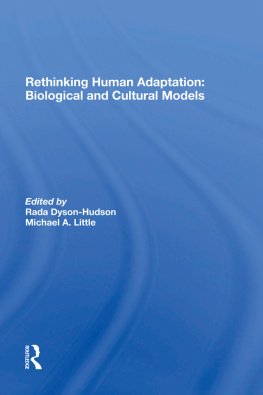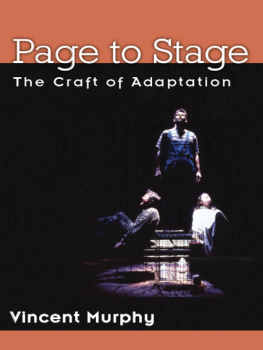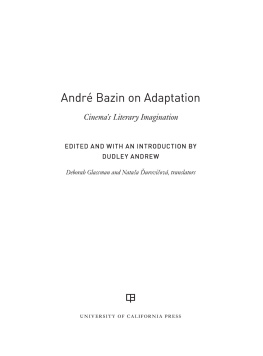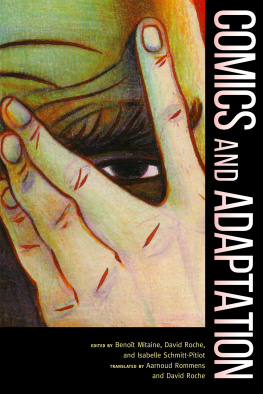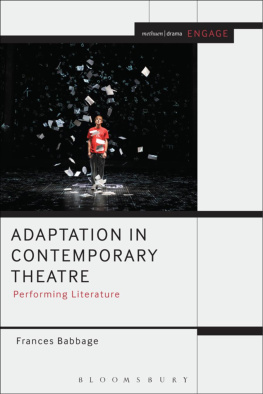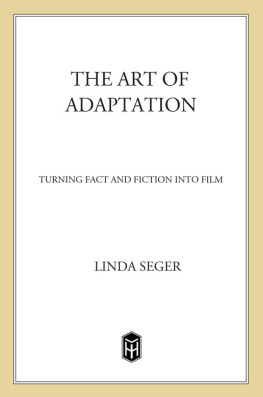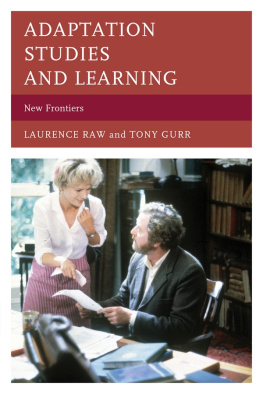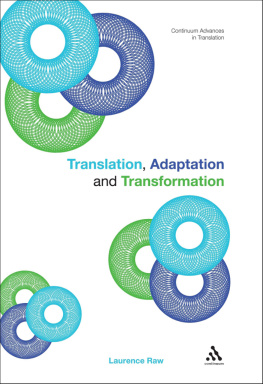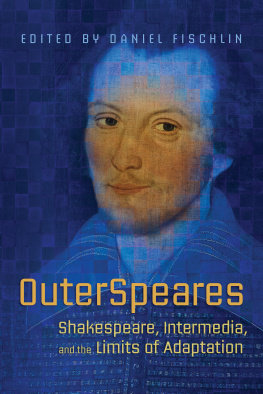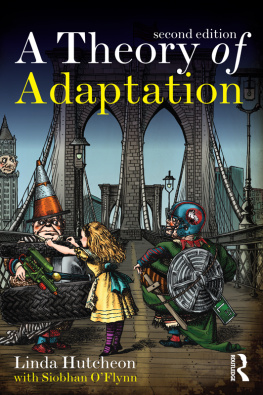The Drift
Affect, Adaptation, and New Perspectives on Fidelity
John Hodgkins
Bloomsbury Academic
An imprint of Bloomsbury Publishing Plc
175 Fifth Avenue New York NY 10010 USA
50 Bedford Square London WC1B 3DP UK
www.bloomsbury.com
First published 2013
John Hodgkins, 2013
All rights reserved. No part of this publication may be reproduced or transmitted in any form or by any means, electronic or mechanical, including photocopying, recording, or any information storage or retrieval system, without prior permission in writing from the publishers.
A version of appeared in College Literature 39.4 in slightly different form, under the title A Dark-Adapting Eye: Susanna Moore, Jane Campion, and the Fractured World of Postmodern Noir.
No responsibility for loss caused to any individual or organization acting on or refraining from action as a result of the material in this publication can be accepted by Bloomsbury Academic or the author.
Library of Congress Cataloging-in-Publication Data
Hodgkins, John.
The drift : affect, adaptation, and new perspectives on fidelity / by John Hodgkins.
pages cm
Includes bibliographical references and index.
ISBN 978-1-62356-070-6 (hardcover : alk. paper) 1. Film adaptationsHistory and criticism. 2. Literature and motion pictures. 3. Affect (Psychology) I. Title.
PN1997.85.H53 2013
791.43609dc23
2012050837
ISBN: 978-1-6235-6898-6
For my parents
Contents
This book would not have been possible without the assistance of many, and I gladly thank them here for their generosity. I extend my deepest gratitude to Ryan Trimm, whose invaluable advice and unflagging support over the past several years were instrumental in making this study a reality. In fact, Im quite certain that without his guidance and encouragement, it wouldnt exist. I thank Naomi Mandel, whose own scholarship serves as a continual source of inspiration, for her thoughtful feedback on early drafts of chapters: her keenand keenly honestinsights pushed me to become a better writer and thinker. Alain-Philippe Durand and Jean Walton supplied both counsel and kindness along the way, for which Im deeply grateful. The researching and writing of this book were funded, in part, by fellowships from the University of Rhode Island, and I offer them my sincere appreciation, particularly Galen Johnson at the Center for the Humanities. And I am indebted to Katie Gallof at Bloomsbury, for welcoming this project with enthusiasm and good cheer, and helping it to see the light of day.
Finally, I owe special thanks to my family. To my mother, Judy, who insisted I read for at least an hour a day during my childhood summer vacations, despite my loud and prolonged protestations, and ultimately instilled in me a love of books. And to my father, Huck, my reliable late-night movie companion, who helped foster my love of film. This book bears their imprint, as do I.
Adaptation
For Jean-Baptiste Lamarck, an evolutionary theorist writing in the early 1800s, the term connoted positive change, an ability to physiologically adjust in response to the demands of ones environment, and to then pass along such advantageous characteristics to future generations. For Charles Darwin, adaptation suggested survival: the natural selection of genetic traits that, over time, led to greater life expectancy and reproductive success. As the protean word has increasingly found a home in our everyday parlance, beyond the realm of scientific discourse, it has accumulated additional implications and associations; yet the majority of these newer semantic colorations still adhere to the underlying idea (fundamental to both Lamarck and Darwin) that there is a certain utility to be found in adaptationthat the term by and large indicates an alteration for the better, a modification designed to increase longevity, or efficacy, or suitability. Quite simply, in an historical and a contemporary sense, adaptationin its various incarnationsis most frequently understood as a form of progress.
An exception to this general propensity may be found in the field of critical theory, specifically film and literary theory, where the word adaptation conjures no such favorable connotations. On the contrary, for many scholars, the notion of adaptation (normally conceived as the adapting of a novel or play to the cinema) has traditionally been synonymous with violation. Robert Stam bemoans this tendency to characterize filmic adaptations as artistic assaults on sacrosanct precursor texts, arguing that it has resulted in a critical language which is extremely judgmental, proliferating in terms that imply film has performed a disservice to literature. So much for the utility of adaptation.
This book proposes to challenge such negative inclinations common to literary and film theory, particularly as they are manifested within the field of adaptation studiesa field that draws heavily on both disciplines, yet is embraced by neither. It does so by offering a new theoretical orientation, a new framework, through which to interrogate and understand the complicated relationship between literature and cinema: namely, affect. Specifically, I (re)conceive literary and filmic texts as affective economies that communicate with each other, and with audiences, through the transmission of affective intensities, and the adaptive process as a dissemination of those intensities from one medium to another, where they take root and induce change from within. By rethinking adaptation in this manner, I contend, by conceptualizing the process not merely as a transposition of narrative content from one work to the next, but as a generative drifting of affective forces between works, between mediums, we are able to steer away from the notion of fidelity (to story, to character, to theme) which has anchored so many analyses of adaptive texts over the years, and the reproving language generally attending it. We are able to steer away from the sometimes delimiting preoccupations and presuppositions, the deeply ingrained attitudes and agendas historically informing adaptation studies, and thus toward fresher, richer avenues of critical inquiry: What affective work are certain literary and filmic texts performing? How do they foster what Steven Shaviro terms [i]ntensive affective flows, and how do these intensities provoke, in turn, new shifts and transformations and becomings? What can this tell us, more broadly, about the underexplored affective dimensions of literature and cinema, and the dialogic interactions between them?
Such questions are worth pondering, especially at this moment in time. As Simone Murray notes, adaptation has increasingly come to comprise the structural logic of contemporary media and cultural industries, and therefore constructive considerations of adaptation should play a central role in theorizations of twenty-first century culture.ad infinitum. Consequently, adaptation studies is advantageously positioned to begin theorizing this new dominant, to begin mapping these intermedial and cross-cultural flows and movements and disseminations, if only it can recalibrate its focus: if only it can displace (or at the very least supplement) its traditional concentration on fidelity and the rendering of judgment with more flexible, more productive analytical models, models which are sensitive to the marked fluidity and hypertextuality of our era. A critical methodology attuned to affect, I submit, is one such model.


